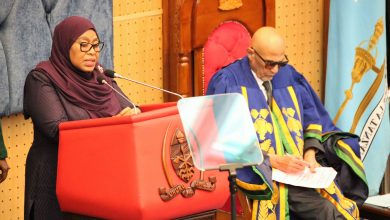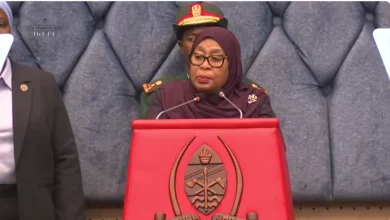Eight new aircraft, aviation varsity to drive ATCL growth

DODOMA: THE government has pledged to acquire eight more aircraft by 2030 to strengthen Air Tanzania Company Limited (ATCL), expanding both domestic and international routes and positioning the country as a regional aviation hub.
President Samia Suluhu Hassan said on Friday during the inauguration of the 13th Parliament in Dodoma that the decision is part of a broader plan to open up the country and elevate Julius Nyerere International Airport into a major hub for international flights.
“By 2030, we plan to further strengthen our national airline by adding eight new aircraft, enabling the airline to increase its flights within and outside the country,” she said.
The Head of State also assured the House that plans are underway to build a National Aviation University to improve and strengthen training for aviation professionals.
“We will enhance training and attract more experts, including pilots, engineers and cabin crew,” she said.
President Samia also outlined ongoing and upcoming airport development projects across the country, saying that the government will complete the construction of several airports, including Msalato International Airport in Dodoma and upgrades to airports in Mwanza, Iringa and Mpanda.
She added that more airports especially those in border regions will be expanded to promote trade and tourism.
Among the key aviation projects is Mugumu Airstrip, which will enhance access to Serengeti National Park; Njombe Airport, which will support the fruit and agricultural trade and Kyabajwa Airport in Kagera, expected to open new economic opportunities for the region.
President Samia said the government’s continued commitment will open the country further, stimulate trade, attract investment and advance tourism growth as Tanzania moves toward its 2030 and 2050 development goals.
The move aligns with the priorities set in the 2025/26 national budget, which allocated 2.746tri/- to the Ministry of Transport, including 2.621tri/- for development projects and 125.4bn/- for recurrent expenditure.
A large share of the development budget is directed towards transport and aviation infrastructure covering the completion of major airports, rehabilitation of regional airstrips and continued investment in aircraft procurement to boost connectivity, trade and tourism.
The government’s longterm plans are also aligned with Tanzania Development Vision 2050, which identifies aviation as a strategic sector for national transformation.
The Vision calls for a modern and competitive national airline, world-class airports, strengthened air safety systems and a skilled aviation workforce to support tourism growth, export expansion and stronger transport corridors.
With increased investment in aircraft, airport infrastructure and professional training, Tanzania aims to fortify its aviation industry and establish itself as a key air transport hub in East and Central Africa.
The improved aviation infrastructure is expected to deepen regional integration within the East African Community and widen Tanzania’s trade and investment networks across Africa, Asia and Europe.





